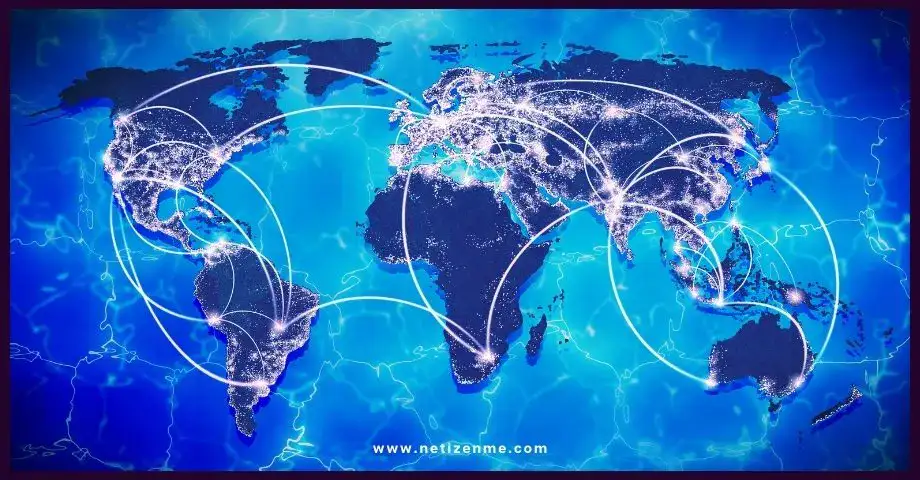
Globalization Theories
Globalization refers to the exchange of information, knowledge, goods, services, and ideas worldwide. It occurs when global cultures and economic systems converge, promoting integration, interaction, and interdependence among countries. The more the politics, economies, and cultures of different countries become interspersed, the more globalization grows. In this article, we discuss two of the most common globalization theories.
1. World Systems Theory
According to the world systems theory, wealthier nations gain from and exploit the citizens of other, weaker countries that are dependent on the former. It classifies the global economic structure into core, semi-peripheral, and peripheral countries.
- America and Japan, for example, are core, major capitalist countries with significant levels of urbanization and industrialization. Core countries are capital-intensive, with higher wages, high-tech manufacturing processes, reduced levels of worker exploitation, and currency cohesiveness. The core countries control most of the world’s capital and technology, as well as global trade and economic agreements.
- Peripheral countries, such as Africa and poor countries in South America, are capital-dependent on core countries and have less industrialization and urbanization as a result. In addition, most peripheral countries are agrarian, with low literacy rates and poorer living standards, such as a lack of internet access.
- Finally, semi-peripheral countries, such as South Korea, India, and Brazil, to mention a few, are less developed than core countries but much more developed than peripheral countries. As a result, countries in the lower levels of the hierarchy face at least some form of exploitation from core countries. This also greenlights the exploitation of the peripheral countries at the hands of the semi-peripheral countries.
Core countries extract raw materials and deplete natural resources at alarming rates in peripheral countries. Because they sit atop the hierarchy, they also have the power to manipulate market prices at their whim, regardless of actual market value. This forces small vendors, especially small farmers, to abandon their businesses and lands. Additionally, even the disproportionately rich in peripheral countries benefit from the labor of poor people.
The world systems theory is often criticized for being too centered on economics, with little to no emphasis on the impacts of cultural globalization and the class struggles of many nations.
2. World Culture Theory
World culture theory is a term used to describe a specific view of globalization that focuses on how participants become aware of and give meaning to life in the world as a unified entity. It defines globalization as a collection of dynamic relationships between the four essential parts of society, the international system, the individual self, and humanity. It entails the “combination of many types of life.” In this theory, no one component of society can exercise a stronghold over another component; each part merely has a role to play in the united world.
This theory talks about world culture, the consciousness of which is built on a set of norms, assumptions, expectations, and knowledge. World culture is distinct from local cultures, and it is usually formed based on global rituals.
There are four main aspects of the workings of world culture:
- It is relative to universal standards
- The actors try to emulate others using some mutual standards as yardsticks
- Global culture is perpetuated differently by each individual and society based on past experiences
- It is contested, i.e., all components are involved in cultural politics, with some defending the global culture while others advocate against it.
The principal merit of this theory is that it reinforces the concept that markets work because they are propelled by human groups and their unique ideas, beliefs, values, and knowledge, not because they are made up of autonomous individuals free of social sanctions. It can help people understand and promote development in situations when group interactions take precedence and individualism is moderated (Serrat, 2017).
Check the following reference articles to learn more about Globalization Theories :
- Lechner, F. (n.d.). The Globalization Website – Theories. The Globalization Website. Retrieved April 10, 2022, from (URL)
- Serrat, O. (2017, May 23). Culture Theory. SpringerLink. (URL)
- Does the Study of Art History Help Understand Cultures?

- Divergent Cultural Characteristics

- South Koreans celebrating love on the 14th of every month

This article is written by:
Our professional writers and editors are passionate about sharing high-quality information and insights with our audience. We conduct diligent research, maintain fact-checking protocols, and prioritize accuracy and integrity to the best of our capacity.
You can cite our articles under the author name "Netizenme"




